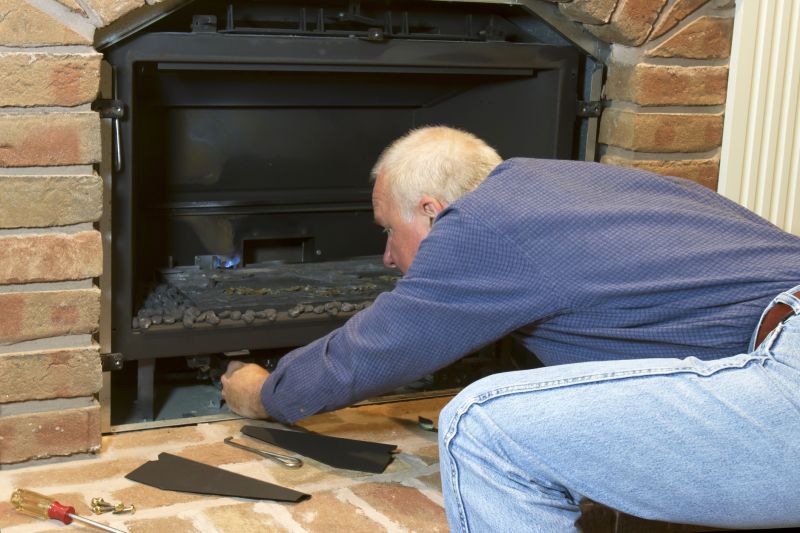Popular Tools For Streamlined Chimney Demolition Projects
Learn about the most sought-after tools that help professionals complete chimney demolitions efficiently and effectively.
 Chimney demolition is a complex process that requires specialized tools and equipment to ensure safety and efficiency. Whether removing an outdated chimney or preparing a structure for renovation, selecting the right products is essential. The process involves carefully dismantling or collapsing the chimney structure while minimizing damage to surrounding areas. Proper planning and the use of appropriate demolition tools can help streamline the project and reduce potential hazards.
Chimney demolition is a complex process that requires specialized tools and equipment to ensure safety and efficiency. Whether removing an outdated chimney or preparing a structure for renovation, selecting the right products is essential. The process involves carefully dismantling or collapsing the chimney structure while minimizing damage to surrounding areas. Proper planning and the use of appropriate demolition tools can help streamline the project and reduce potential hazards.
Top Overall Option
Heavy-Duty Demolition Hammer
A versatile demolition hammer equipped with adjustable settings and ergonomic design can handle various chimney materials and sizes. Its powerful motor and durable construction make it suitable for breaking through brick, concrete, and mortar with relative ease, providing a controlled demolition process. When paired with appropriate safety gear, it offers a practical solution for both professional contractors and experienced DIYers.
Types of Products For Chimney Demolitions
Demolition Sledgehammers
Handheld tools ideal for breaking up smaller sections of chimney structures, especially brick and mortar.
Rotary Hammers
Power tools designed for drilling and chiseling into tough materials like concrete and brick.
Reciprocating Saws
Electric saws with specialized blades for cutting through wood, metal, and masonry during demolition.
Demolition Blades
Heavy-duty blades compatible with saws, designed for cutting through masonry and concrete.
Safety Gear Sets
Complete protective equipment including helmets, gloves, goggles, and respirators for safe demolition work.
Debris Containment Nets
Equipment used to contain dust and debris, preventing damage and maintaining cleanliness during demolition.
Hydraulic Splitters
Heavy machinery attachments used to split large masonry sections into manageable pieces.
Chimney Collapse Kits
Complete kits with tools and instructions for controlled chimney collapse, often used in professional demolitions.
Dust Suppression Systems
Equipment designed to minimize airborne dust during demolition activities.
Scaffolding and Support Structures
Temporary structures to support surrounding areas and provide safe access during demolition.
Concrete Crushers
Machines specialized in crushing concrete and similar materials into smaller fragments.
Wrecking Balls
Heavy steel balls used for large-scale demolition, typically in professional settings.
Pneumatic Hammers
Air-powered tools suitable for breaking through tough masonry and concrete.
Chimney Support Braces
Equipment used to stabilize structures during partial demolition or collapse.
Thermal Cutting Tools
Equipment such as plasma cutters for precise cutting through metal components of chimneys.
Popular Choices
Portable and easy to handle, suitable for breaking up small to medium masonry sections.
Battery-powered options offering mobility and convenience for various demolition tasks.
Tools designed for manual chiseling into brick and mortar during partial demolition.
Electric saws with diamond blades suitable for precise cuts in masonry materials.
Essential safety equipment to protect against dust inhalation during demolition.
Compact hydraulic tools for splitting large masonry sections with controlled force.
Head protection with clear visors to shield eyes and face during demolition activities.
Power drills equipped with masonry bits for creating access points or removing sections.
Netting systems for efficient debris collection and site cleanliness.
Temporary supports used to stabilize remaining structure during demolition.
Diamond blades designed for use with angle grinders to cut through masonry materials.
Heavy-duty vacuums to clean up dust and debris efficiently during demolition.
Various products are designed specifically for chimney demolition, ranging from handheld tools to heavy-duty machinery. Hand tools such as sledgehammers and chisels are often used for smaller sections or detailed work, while power tools like rotary hammers and demolition saws are suitable for larger, more robust structures. Safety equipment, including protective gear and debris containment systems, also plays a critical role in ensuring the safety of workers during demolition.
When choosing products for chimney demolition, considerations such as material compatibility, structural size, and the demolition environment are important. For instance, brick chimneys may require different tools than those made of concrete or metal. Additionally, the project scope and budget can influence whether a DIY approach or professional demolition services are appropriate. Properly selected products can help achieve a safer, more controlled demolition process, reducing the risk of accidents and property damage.
Key Buying Considerations
- Material Compatibility: Ensure the product is suitable for the type of chimney material, such as brick, concrete, or metal.
- Project Scope: Match the tool's capacity and power to the size and complexity of the demolition task.
- Safety Features: Look for safety mechanisms like automatic shutoff, ergonomic design, and protective guards.
- Ease of Use: Consider the weight, handling, and user-friendliness of the equipment, especially for DIY projects.
- Durability and Build Quality: Opt for products made from high-quality materials to withstand demanding demolition activities.
- Power Source: Decide between corded, cordless, pneumatic, or hydraulic tools based on mobility needs and available power sources.
- Noise and Vibration Levels: Be aware of noise levels and vibration to ensure safety and comfort during use.
- Accessories and Attachments: Check for compatible blades, chisels, or bits that can expand the tool's versatility.
- Storage and Portability: Consider whether the product is easy to transport and store, especially for remote or multiple-site projects.
- Cost and Budget: Balance the features and quality with your budget to find a practical solution.
- Environmental Conditions: Ensure tools are suitable for indoor or outdoor use, considering weather and workspace conditions.
- Maintenance and Support: Look for products that are easy to maintain and have accessible customer support or warranties.
- Regulatory Compliance: Verify that the equipment meets safety standards and certifications relevant to your location.
- Compatibility with Existing Equipment: Ensure new tools can integrate with your current toolkit or machinery.
